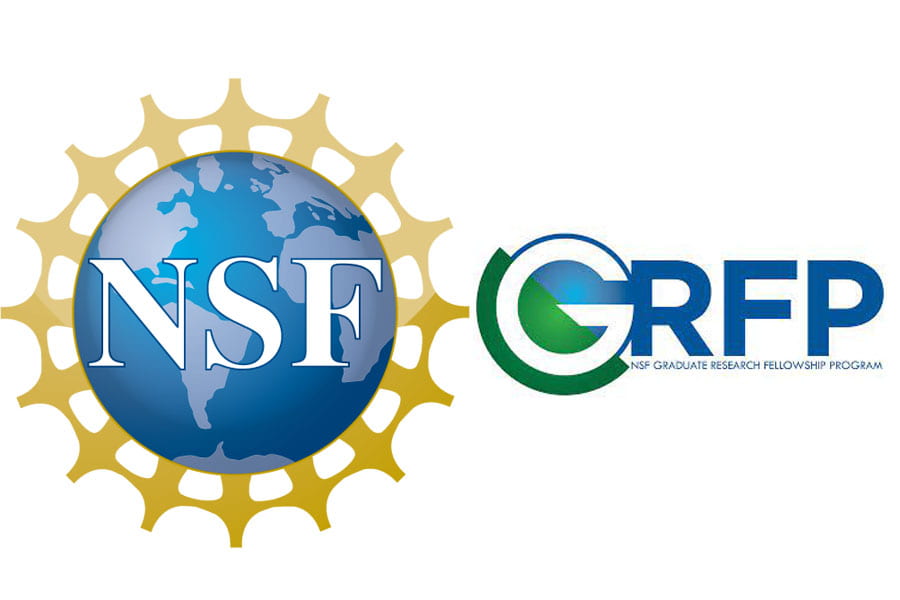If you’re considering graduate school in science or engineering, you’ve probably heard about the NSF Graduate Research Fellowship Program (GRFP). It’s one of the most competitive and prestigious fellowships available for early-career researchers in the United States. But applying can be daunting, and I wanted to share a few tips that helped me navigate the process when I applied (and eventually received it!).
What is the NSF GRFP?
According to the NSF GRFP website, the program exists to “ensure the quality, vitality, and strength of the scientific and engineering workforce of the United States.” It provides three years of financial support over a five-year period, including:
- $37,000 annual stipend to the Fellow
- $16,000 annual cost-of-education allowance paid to the university
It’s a huge boost to any graduate student, offering not only financial freedom but also recognition that can open academic and professional doors.
Who Can Apply?
You’re eligible to apply:
- Once as an undergraduate (typically your senior year), and
- Once in graduate school (usually your first year)
You can only apply once as a graduate student, so make sure you time it wisely.
Applicants will either:
- Be awarded the fellowship
- Receive an honorable mention (no money, but still a recognition)
- Or not be selected (no shame in this – many outstanding scientists weren’t selected on their first try)
Getting Started
The application is typically due in October, and decisions are usually released in early April—meaning you’ll have to survive a long and painful wait. I found comfort in commiserating with others on the r/GRFPApps subreddit, which is full of advice and support.
Before you begin writing, find a faculty member (ideally your advisor or someone in your field) who is willing to work with you directly. They can help you refine your research idea and review your statements, which is crucial.
You’ll need to submit:
- A Personal Statement (your story, trajectory, and goals)
- A Research Statement (a proposed project you would conduct in grad school)
Each must address:
- Intellectual Merit: How your work advances knowledge
- Broader Impacts: How your work benefits society
You’ll also need:
- 3 Letters of Reference (ideally from academic mentors)
IMPORTANT: Follow the formatting rules EXACTLY. These change every year. Don’t trust old examples, and double-check the current year’s requirements. Even a small formatting mistake (like incorrect section headers or line spacing) can lead to automatic disqualification. You’ll be notified around Thanksgiving if your application was disqualified—don’t let that be you.
My Top 7 Tips for Applying
- Read as many successful applications as possible
A fantastic resource is Alex Lang’s website, which hosts hundreds of winning and honorable mention essays. The best applications have a consistent story that threads through the personal statement, research proposal, and even the reference letters. When you ask for letters of recommendation, communicate your story clearly so your letter writers can align with it.
- Take the Broader Impacts section seriously
This is where many applicants (myself included) get dinged. The NSF wants to fund people who actively plan to share science with the broader community, especially underrepresented groups. Be specific. “I will mentor students” is too vague. Describe how, where, when, and who you’ll engage.
- Make your research aims crystal clear
Develop a structure for your research statement that makes your aims, hypotheses, and methods extremely easy to follow. One format I found helpful:
Aim 1: Investigate [big question].
I hypothesize that [your hypothesis].
To test this, I will [brief methods summary].
- Ensure cohesion across the whole application
Your personal and research statements, plus your letters of recommendation, should reinforce one another. Reviewers should come away with a strong, consistent sense of who you are and why you’re a good investment. If possible, ask each letter writer to highlight different strengths (research ability, leadership, communication, etc.).
- Get as much feedback as possible
Even if you don’t take every suggestion, feedback from different readers helps you anticipate the kinds of reactions reviewers might have. Peers, mentors, writing centers, use every resource you have.
6. Obsess over formatting
I’m repeating this because it’s the easiest way to get disqualified. Auto-checkers scan your application before it even reaches a human reviewer. If you didn’t follow the formatting instructions perfectly, your application will not be reviewed. When you export your documents to PDF, make sure that formatting remained the same.
7. Write something you are proud of
This process can be stressful. And yes, the review process involves some randomness. Scores are weighted using a z-score system, so if a lenient reviewer gives you a great score, it may count less than if a harsh reviewer scores you well. That’s out of your control. What is in your control is crafting an application you feel good about, regardless of the outcome.
Final Thoughts
Applying for the GRFP was one of the most difficult, and most rewarding, writing challenges I’ve faced as a student. Whether you win or not, going through the process will help you clarify your research goals, sharpen your writing, and reflect on your values as a scientist.
If you’re thinking about applying and want someone to bounce ideas off, feel free to reach out. And if you’re currently waiting for results, hang in there. You’re not alone.

